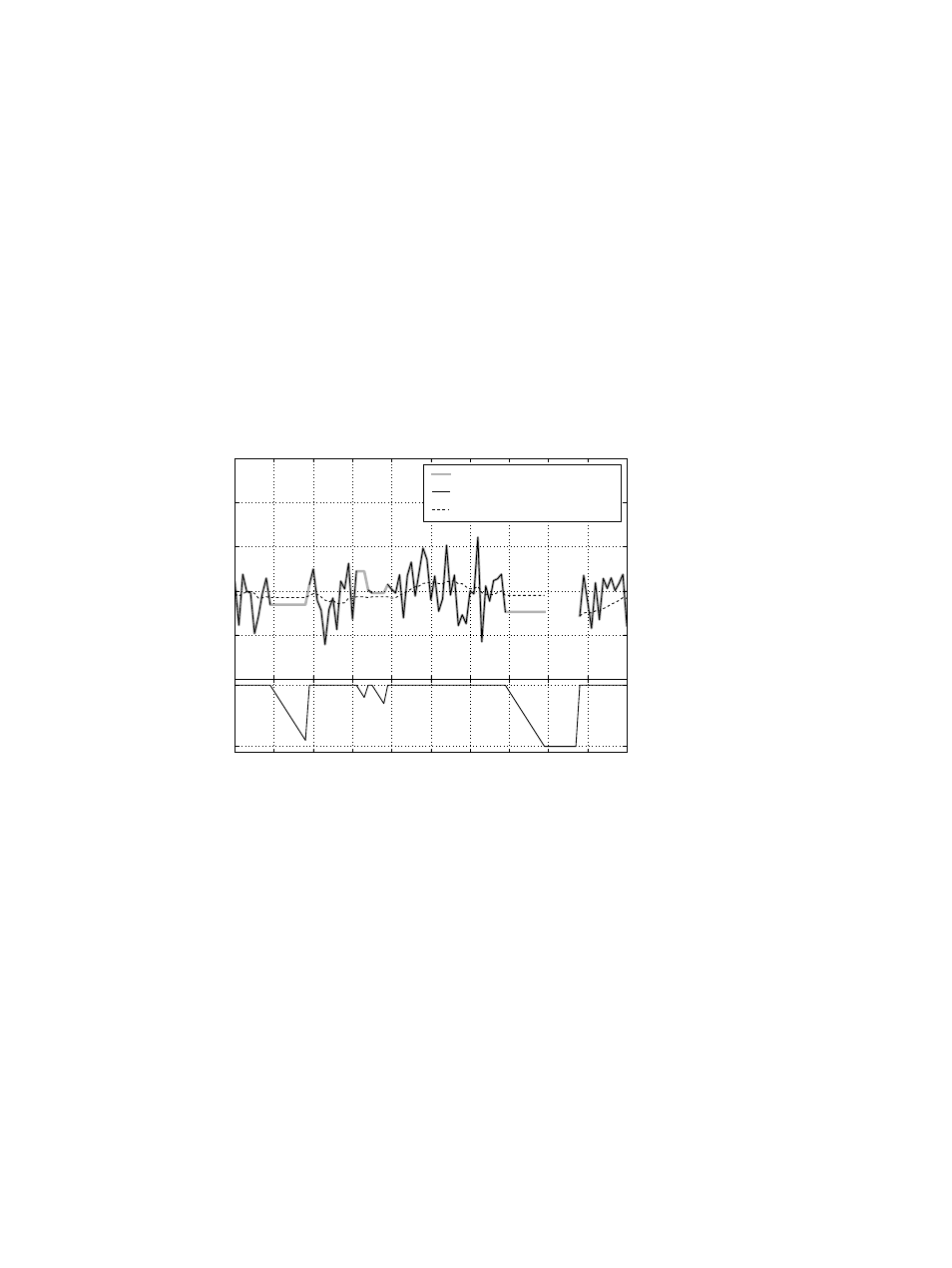K-Patents PR-23 User Manual
Page 48

40
PR-23 instruction manual
SAMPLE
,
NO OPTICAL IMAGE
,
PRISM COATED
), the measurement is held for the given number of
seconds.
For example, a setting of 10 seconds ensures that any
NO SAMPLE
state which is shorter
that 10 seconds will not make a dip into the output signal. The factory setting is 5
seconds, access the
6 TOLERANCE TIME
menu item to set the tolerance time.
The tolerance time counter is reset always when there is a representative sample on
the prism (e.g., the nD can be determined). Figure 6.4 illustrates this behaviour with
an intermittent measurement signal. When the signal drop is shorter than the toler-
ance time (e.g. at t = 10 s or t = 35 s in the figure), the output signal does not drop. If
the signal drop is so long that the tolerance time counter reaches zero, there will be a
drop in the output signal (at t = 80 s in the figure)
CONC [%]
Signal with tolerance
Original signal
Filtered (damped) output
0
10
20
30
40
50
60
70
80
90
100
Time [s]
Tol. time counter
Figure 6.4
Effect of tolerance time on output
6.2.4 QF threshold
The QF threshold setting can be used to prevent the instrument from measuring when
the image quality is below a certain limiting value. When QF value becomes less than
the user defined value the image status changes to NO OPTICAL IMAGE after the user
defined tolerance time (see Section 6.2.3 for tolerance time). By default the QF thres-
hold value is -500.
6.2.5 Hold source interactions
There are three different reasons why the measurement signal may be in hold. All
three result in the same behaviour, but they also interact with each other.
